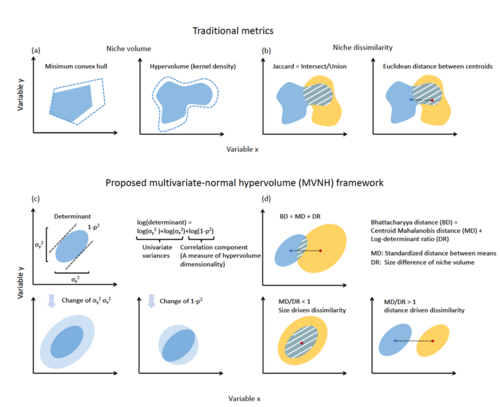
The idea of the niche has been the cornerstone of ecology: the set of environmental conditions that a species can live and reproduce in determines the outcome of the Darwinian ‘struggle for existence’. However, since Hutchinson first proposed describing a species’ niche with an ‘n-dimensional hypervolume’ in 1957, the empirical quantification of the hypervolume has been plagued by several operational and computational issues. One of the most notorious issues in quantifying hypervolume is the ‘curse of dimensionality’, e.g., niche measures are highly sensitive to the dimensions of data.
In a new study published in Methods in Ecology and Evolution, PhD candidate Muyang Lu, Postdoctoral Associate Kevin Winner and BGC Center Director Walter Jetz proposed circumventing the issue by partitioning niche variation into one-dimensional components and a dimensionality component. The new framework not only provides a simple solution to an old problem, but also paves the way for integration between empirical measures and theoretical results.
Read the article in full here!
